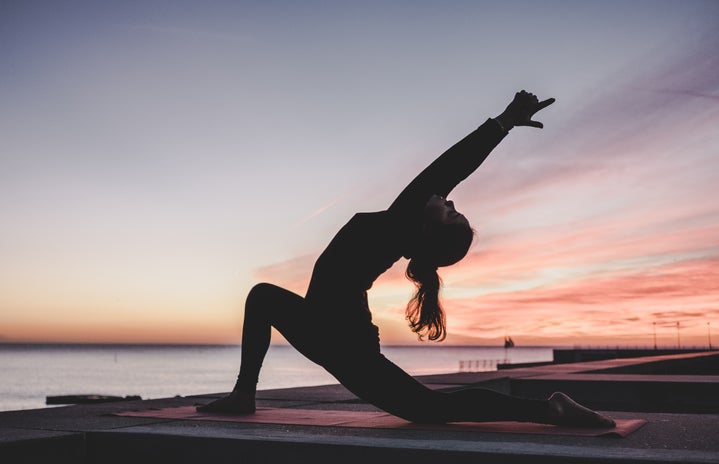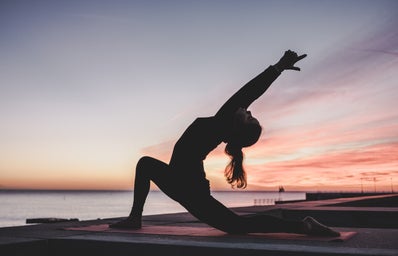What’s our bodies’ largest organ? Is it our brains, those are pretty big, right? Oh, wait our lungs are probably larger. Well, our largest organ is actually our skin. And isn’t our skin a m a z i n g? Some of us have skin that is darker, and some have skin that is lighter. Others of us have freckles sprinkled across our noses, wrinkles around our eyes, or lots of hair on our legs. We might have sensitive skin, or scars telling of old adventures, and some of us have tattoos decorating our skin, but we all have skin.
Our skin has the unique ability absorb materials that it is put in contact with. So in theory, if we were to pour dangerous chemicals on our skin, then those chemicals could penetrate our layers of skin and be absorbed into our bodies. How many of you would be surprised if you were told that most of us do this every day? When we wash our hair, put on make-up, brush our teeth, paint our nails, or put on moisturizers – we are all potentially putting ourselves in contact with harmful chemicals that are carcinogenic, endocrine disrupters, allergens, or worse.
On average, women use about 12 personal care products a day, and this exposes us to about 168 different chemicals. Men use about half that amount. But the personal care products with these chemicals we buy in stores are always safe, right? Unfortunately, this is not always the case.
The cosmetics industry is one of the least regulated industries in America. The FDA is limited on what it can actually do to regulate cosmetic companies. For example, the FDA cannot require companies to perform safety tests before releasing their products to the market where we buy them.
That’s scary, right? We would hope companies perform these safety tests anyway, but it is not a requirement by law. The Federal Food, Drug, and Cosmetics Act outlines the standards and regulations that the industries must abide by. There are 112 pages for safety standards for food and drugs, but two pages for cosmetics. The act has been updated only once in the 76 years since it was enacted.
There seems to be a need for change.
(The EU is the European Union – the European equivalent to the FDA)
Recently a bill called the Personal Care Product Safety Act of 2015 was proposed to give the FDA more power in regulating the cosmetic companies, in regards for the safety of their ingredients and manufacturing practices. However, we all know that the government can sometimes be a tad slow in getting things done. So, meanwhile….If the government cannot protect you, who can?
You have the power to look after your safety and health. With easy resources and and simple steps, you can make little changes in your life to make sure that what you are putting in and on your body is truly good for you. The resources below will help you to educate yourself on dangerous chemicals in your cosmetics and make smart, informed decisions about safer alternatives you can use.
The Campaign for Safe Cosmetics is an organization that aims to raise awareness about the chemicals in our cosmetics in hopes to increase cosumer demands for companies to make our products safe.
They list their “Top 5 Safe Cosmetics Tips:”
1. Simplify
2. DIY
3. Research products yourself
4. Use apps like Think Dirty
5. Get Involved
Their website and social media accounts have many amazing resources that would be worth your time in checking out. So, the next time you are in the store shopping for a new cosmetic, like shampoo, take the time to look what is really in it.
But how are we supposed to know if all those crazy complicated chemical names are safe or not? Thankfully, some of the work has been done for us.
The Environmental Working Group is another organization dedicated to raising awareness for our well-being. They created a data base called Skin Deep, where you can type in the name of any chemical and get its safety concerns and the amount of research that has been done on the chemical. Although, if typing in those crazy chemical names is a bit too cumbersome for you, then check out the mobile app Think Dirty.
This app will let you scan the barcode on your cosmetic products and then give you a 1-10 safety rating (1 being safe and 10 being a high risk). But the app does not stop there. You can then see which individual ingredients in the product were ranked most dangerous and why. It then gives you safer alternatives you can buy online with the app!
I took the Think Dirty challenge and scanned all the products I use on a daily basis. The app gave me the average safety rating of my bathroom. Guess what I got? An 8 – meaning my “bathroom is dirty!” and has unsafe products in it. ☹ I was stunned to find this out. The products I use every day are doing more harm to me than good – what a shocking wake up call. I plan to slowly start phasing out my unhealthy products for safer alternatives. There are simple ways we can all do this. We can search for simpler, cleaner, and healthier alternatives from reputable safe cosmetic companies and/or we can DIY the products ourselves.
The Beautycounter aims to provide women with safer make-up and cosmetic alternatives. They created a “NEVER” use list, which names thousands of chemicals deemed unsafe for use, which the company promises to never use in their products. Here is their shortened reference “Never List” for on-the-go shopping:
You can also choose to “do-it-yourself” or DIY safer cosmetic products. This will allow you to have direct control over the ingredients that you use on your body. The lifestyle blog, MindBodyGreen has an article called “12 DIY Ways To Use Coconut Oil In Your Beauty Routine.” The article lists that coconut oil can be used to make toothpaste, deodorant, moisturizer, hairspray, and shaving cream! Seriously, what can’t coconut oil be used for?
At a young age, we were handed cosmetics like toothpaste or shampoo, and did not think twice about using these products on our bodies. We have trusted that these products are harmless. We have grown up in a culture where cleanliness and beauty are held in the highest esteem. However, this same culture also values money. Companies supply our demand for cosmetics, and will use the chemicals that are the most cheap and easy for them, while potentially unsafe for us.
We have all felt the pressure to look fresh and presentable – but at what cost to our health? It’s time we reclaim our bodies from big companies and chemicals. We can take steps to become aware of what we are putting on and in our bodies, and have the agency to make healthier decisions for ourselves.
So the next time you’re shopping for shampoo or hair-dye or lotion – think to yourself…
What am I putting on my body? What will it do to me? How can I change that?

